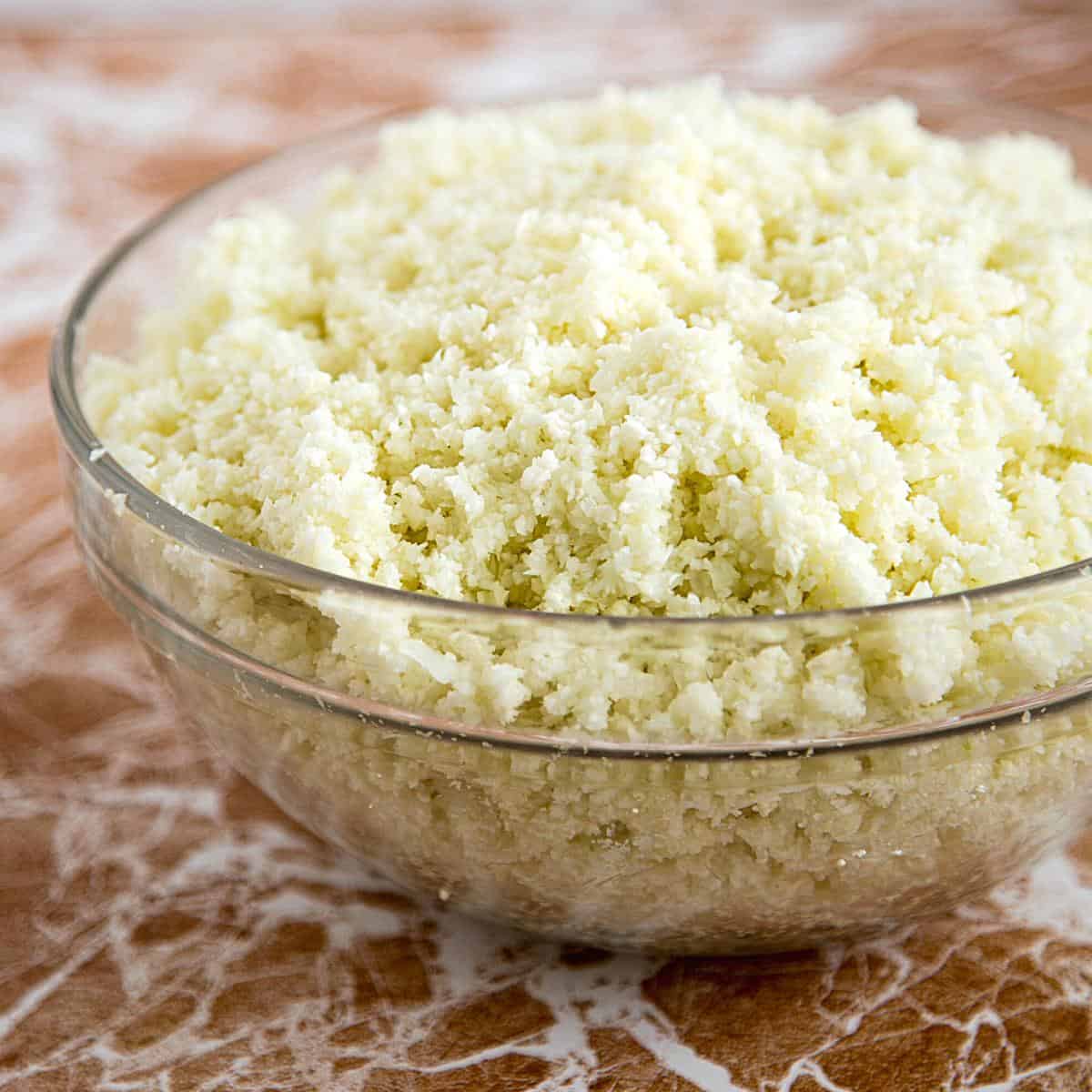It’s time to think outside the grain and unleash the potential of cauliflower! This humble vegetable can be transformed into a mouthwatering rice substitute to revolutionize your meals. Cauliflower rice is a popular low-carb alternative to traditional rice that is made by finely chopping or processing cauliflower florets into small, rice-like pieces. While it’s difficult to attribute the invention of cauliflower rice to a single person, it gained popularity as part of the broader movement toward using vegetables as substitutes for grains and starches. Cauliflower rice became more widely known as a result of the growing interest in low-carbohydrate and grain-free diets, such as the paleo and ketogenic diets. This innovative use of cauliflower as a rice substitute gained traction among individuals seeking healthier alternatives to traditional rice dishes.
Benefits of cauliflower rice
Cauliflower rice not only adds a burst of flavor to your meals but also offers a host of health benefits. Packed with essential nutrients, this low-carb alternative to traditional rice is a versatile option that can elevate your dishes while promoting overall wellness.
One of the main benefits of cauliflower rice is its low calorie and carbohydrate content. By substituting regular rice with cauliflower, you can enjoy a satisfying meal while reducing your calorie and carb intake. This can be particularly advantageous for individuals following a low-carb or ketogenic diet, as it allows them to maintain their dietary goals without sacrificing taste or variety. Another advantage of cauliflower rice is its high fiber content. Fiber is a crucial component of a healthy diet, aiding in digestion and promoting regular bowel movements. Incorporating cauliflower rice into your meals can provide a generous amount of fiber, helping you maintain a healthy digestive system and potentially reducing the risk of digestive disorders. Furthermore, cauliflower rice is rich in essential vitamins and minerals. It is an excellent source of vitamin C, which supports immune system function and acts as an antioxidant. Additionally, it contains vitamin K, which plays a role in blood clotting and bone health, as well as folate, a vital nutrient for cell growth and development. In addition to its nutritional value, cauliflower rice is also a great option for those with dietary restrictions or preferences. It is naturally gluten-free and can be easily adapted to vegan or vegetarian diets. Whether you’re looking to reduce your carbohydrate intake, increase your fiber consumption, or explore new culinary options, cauliflower rice provides a versatile and nutritious foundation for a variety of dishes.
How to make cauliflower rice
Making homemade cauliflower rice is a simple and enjoyable process that allows you to have full control over the texture and consistency of the final product.
First, buy yourself an excellent large cauliflower. Find one that is bright and fresh with little trimming needed. Roughly rinse the cauliflower, then shake off any excess moisture that may have gone between the florets. To begin, start by removing the leaves and stem from a head of cauliflower, leaving only the florets. Rinse the florets thoroughly under cool water to remove any dirt or impurities. Next, pat the florets dry and break them into smaller pieces. You can do this by using a knife to cut the florets into manageable chunks or simply break them apart with your hands. This step is crucial to ensure even processing and to achieve a rice-like texture. Once you have prepared the cauliflower florets, it’s time to transform them into rice. There are a few different methods you can use, depending on the tools you have available. One popular method is to use a food processor. Simply place the florets in the food processor and pulse until they are broken down into rice-sized pieces. Be careful not to overprocess, as this can result in a mushy texture. If you don’t have a food processor, you can still make cauliflower rice using a grater. Use the larger holes of the grater to grate the florets into rice-like pieces. This method may require a bit more effort and time, but it can still yield excellent results. Once you have processed all the florets, you can cook the cauliflower rice right away or store it in an airtight container in the refrigerator for up to five days. When cooking, you have a few options to bring out the best flavor and texture in your cauliflower rice.
No matter which method you choose, it’s important to work in small batches to ensure even processing and to avoid overcrowding the processor or grater. This will help you achieve a consistent rice-like texture.
Many ways to cook cauliflower rice
Cauliflower rice can be cooked using various methods, each offering a slightly different texture and flavor profile. Here are some common methods for cooking cauliflower rice: Remember that cooking times may vary depending on the desired texture and the specific wattage of your microwave or the heat level of your stove. Experiment with different cooking methods to find the one that suits your taste preferences and the dish you are preparing.
Tips for Perfectly Fluffy Cauliflower Rice
Whether you prefer a sautéed, steamed, or microwaved approach, each method offers a unique twist to the flavor and texture of your cauliflower rice.
To ensure you achieve perfectly fluffy cauliflower rice every time you cook it, here are some tips to keep in mind. Firstly, it’s important to properly chop the cauliflower florets into small, uniform pieces before processing them into rice. This will help ensure even cooking and prevent any large, chunky bits in your final dish. When sautéing cauliflower rice, it’s crucial to use a large skillet or wok to allow for even heat distribution. Start by heating a tablespoon of oil or butter over medium-high heat, then add the cauliflower rice and sauté for about 5-7 minutes. Remember to stir occasionally to prevent sticking and to evenly cook the rice. If you prefer a steamed approach, using a steamer basket or a metal colander placed over a pot of boiling water is the way to go. Simply place the cauliflower rice in the steamer basket or colander, cover it with a lid, and steam for approximately 5-6 minutes. This gentle cooking method preserves the natural moisture and nutrients of the cauliflower while giving it a light and fluffy texture. For those who are short on time, microwaving cauliflower rice is a quick and convenient cooking method. Place the cauliflower rice in a microwave-safe bowl, add a tablespoon or two of water, cover with a microwave-safe lid or plate, and cook on high for 3-4 minutes. This method allows you to have perfectly cooked cauliflower rice in just a fraction of the time it takes to sauté or steam it. It’s perfect for busy weeknight dinners or when you need a speedy side dish.
Easy ways to flavor cauliflower rice
Adding flavor to cauliflower rice is a wonderful way to elevate its taste and make it the star of your meal. While cauliflower rice has a mild and slightly nutty flavor on its own, it acts as a blank canvas that can be transformed with just a few simple ingredients. Here are some easy ways to infuse your cauliflower rice with delicious flavors:
The Ultimate Roasted Cauliflower Recipe for BeginnersCreamy Comfort: Delightful Cauliflower Soup Recipe to SavorTurmeric Cauliflower Rice PilafMustard Dill Cauliflower Rice PilafAloo Gobi – Sautéed Cauliflower and Potato
Frequently asked questions
Did you LIKE this recipe? Save it for later. You can find my recipes on Pinterest. Follow me on Facebook, Twitter, and Instagram.Subscribe, and I’ll send you new recipes right to your inbox. Thank you for sharing - Save for later



















